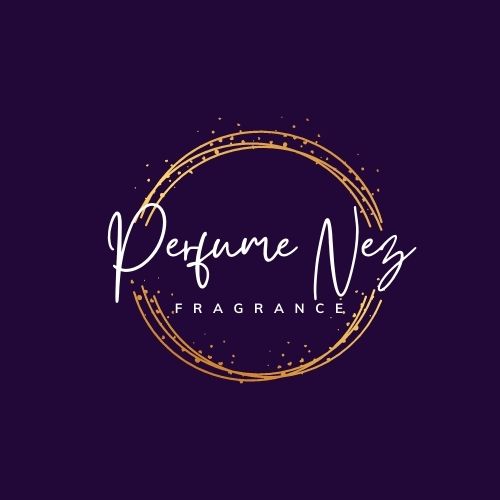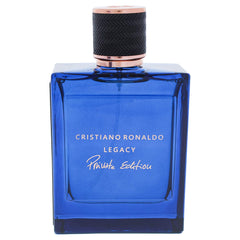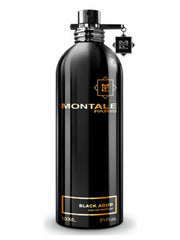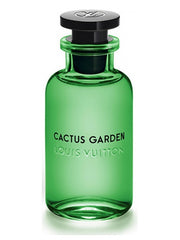Perfume Terminologies
Click For Affordable Inspired Perfume Alternatives

Reading and hearing about perfumes can be confusing with all the different words and meanings. It's like learning a new language, but for scents. There are words like "sillage" that describe how a fragrance lingers, and "accords" which are like musical notes combined to create a unique smell. We'll explore terms like "top notes", "base notes", "projection", and more. This article will help you understand these words so you can talk about perfumes with confidence and know what they mean. Just like knowing a few words in a foreign language makes traveling easier, understanding these perfume terms makes the world of fragrance more interesting.
Performance
The performance of a perfume generally refers to how long the fragrance lasts, how wide it projects and how resilient it is to external factors such as heat, cold, baths, and laundry. Perfumes that have a good performance are said to be potent. This means that with even one spray, the perfume can still be perceived from a distance, and thrive in any weather, even when the clothes it has been sprayed on has been washed or the wearer has had a shower.
Perfumes with poor performance are not potent and can easily fade away as time goes by, or wash away after a bath or laundry, or die away in extreme temperatures. We cannot talk about performance without talking about sillage longevity or projection, which are the three ways to determine how potent a fragrance is.
Sillage
Sillage is also known as a scent trail. It is a fragrance that is left behind as the wearer walks or moves around. When someone walks past you and you feel a light breeze as they move, you can quickly sniff the air to get a whiff of their scent, and that is what we refer to as sillage.
When we talk about sillage, we describe it based on how a second party would perceive the perfume when the wearer passes by. In talking about the sillage of a fragrance, we could use either of the following terms:
Soft: When the sillage of a perfume is soft, it is subtle and gentle in terms of both projection and intensity. A soft perfume typically emits a delicate and close-to-the-skin scent trail. Unlike bold or strong fragrances that make an immediate and pronounced impact, a soft perfume is more subdued.
But soft does not always mean intimate. A perfume can be soft, but still leave a scent trail. Meaning you can smell it, but it is gentle on the nose, so a perfume can be soft, but have a wide projection.
Intimate: Perfumes with intimate sillage barely leave any scent trail behind. With these perfumes, you would have to put your nose against the wearer’s clothes or skin before you can smell anything. Intimate perfumes typically do not have high concentration of essences and are typical among body mists and eau de toilettes.
Poor: Poor is the level above Intimate in terms of sillage. This means that a fragrance does leave a trail, but it is very faint, so you would have to pay close attention to notice it. Perfumes in this category leave a scent trail not more than one feet behind the wearer.
Moderate: A fragrance with a moderate sillage leaves a scent trail of not more than 4 feet behind its wearer. A moderate sillage also refers to a scent trail that is neither strong nor soft. So this can be used to describe the intensity of the perfume as well as how far the scent trails.
Heavy: A perfume with a heavy sillage is a testament to its intensity alone. Heavy perfumes are rich, deep and complex. These types of perfumes typically have an overdose of aldehydes, musk, amber, animalic notes, heavy white florals, resins, smoke, etc. Heavy perfumes slightly differ from strong perfumes; they are usually blunt rather than sharp or piercing.
Strong: A perfume with a strong sillage is also a definition of its intensity. Strong in this sense means loud, thus it is the opposite of a soft perfume. Perfumes in this category are not faint either, they are pronounced with easily identifiable notes and tend to last longer. Strong perfumes are usually infused with woods, spices, booze, strong florals, synthetic notes, ambergris, animalic notes, and the like.
Projection
Projection is the radius or the extent which perfume diffuses from the wearer to their environment. It is how wide the scent molecules can travel, or how far a second person can stand from the wearer and still smell it. Perfumes can either have low, wide, or moderate projection depending on the quality of ingredients, type, and how long ago the wearer put it on. In describing projection, we could use either of the following terms:
Weak: A weak projection means that the scent merely bubbles around its wearer, others have to come close to notice it. Perfumes with weak projections are often accompanied by an intimate, soft, or poor sillage.
Light: Fragrances with light projections barely radiate beyond a two feet radius. And though others might immediately notice it when they come close to the wearer, it fades away quickly. Perfumes in this category are not strong enough to keep being noticed around the wearer, meaning those around it become anosmic to it in no time. Light fragrances typically have a soft sillage.
Moderate: Perfumes with moderate projections do not radiate beyond 4 feet from the wearer. These types of perfumes are not offensive and can be tolerated in the office or school. Perfumes with moderate projections can have soft, moderate, or strong sillage.
Wide: Perfumes with a wide projection could reach anywhere beyond 4 feet of the wearer. These perfumes usually take over any room, and usually leave behind a moderate, strong or heavy scent trail. Wide perfumes are easily noticeable for as long as the wearer is in the room and can still be noticed a little while after the person leaves. These types of perfumes are generally not office-safe or school-friendly because they command a lot of attention.
Enormous: An enormous projection usually means that a perfume has beast mode performance. These types of perfumes are usually accompanied by a very long lasting longevity, and a strong or heavy sillage. Perfumes with enormous projections are usually expensive because of the quality of ingredients used. These may include oud, deep woods and resins, strong spices, intense florals, ambergris, etc. Sometimes “enormous” and “wide” are used interchangeably when talking about projection.
Longevity
Longevity refers to how long the perfume lasts either on clothes or on skin. Longevity is calculated from the initial application, and how long it would take before a reapplication is needed or if reapplication is needed at all. Longevity does not mean that after a said amount of time, you would completely stop smelling the perfume. It simply implies that after the said amount of time, the top and middle notes have faded away, and what is mostly left is the base notes. At this point, the fragrance would no longer smell like you have freshly put it on. Longevity is the part of performance that is calculated in hours, and when we describe longevity we could say:
Between A to B hours: If we say between 3-5 hours, for example, we mean that the perfume could last more than 3 hours or less than 5 depending on how it is used. This implies that the amount of sprays, as well as environmental factors, such as the weather, could impact longevity but it would last anywhere between 3 and 5 hours no matter what.
A hours: If we give a definite amount of hours, say 5 hours, it does not mean that the perfume would last exactly 5 hours, because it is impossible to give a precise time. It is simply an approximation of its longevity. It could be less or more, but when it reaches or approaches the 5-hour mark, you can expect it to start deteriorating.
Eternal: Perfumes with eternal longevity do not easily fade away even after a shower or laundry. These perfumes are typically more expensive because they are made of good quality ingredients. Even when their top and middle notes fade, their base is so rich that the fragrance will noticeably linger for days (especially on clothes), and traces of their top and middle notes can still be detected.
All day: If a perfume lasts all day, you can expect it to still be detectable if you put it on in the morning, go to school or work, and come back home. This could be anywhere between 8 to 13 hours. It means that you can apply the perfume once and trust that you would not need to reapply it throughout the day.
Performance Factors
Clothes
Performance of perfume on clothes describes how potent a fragrance is on fabric. If you spray perfume on your clothes instead of skin, it tends to last longer because fabric can soak up moisture better.
Skin
You could either apply perfume directly on your skin or on your clothes. These are two completely different things, so they hold on to scent molecules and diffuse them differently. Usually, perfumes last longer on fabrics, this is also because we do not wash fabrics as often as we take baths. If a perfume performs great on skin, it is an indication of how potent it is.
Seasons
Warm Months: Warm weather can change how perfumes smell and behave. In the heat, the top notes of a perfume disappear quickly, and the scent might become stronger and more noticeable to others. Some fragrances might also seem sweeter in warm weather. However, the high temperatures can make perfumes fade faster, and they might not last as long. The scent might even be different due to the heat changing how the ingredients work together. It's a good idea to choose lighter fragrances with fresh and citrusy scents for warm weather, as they tend to work better and feel more refreshing.
Cold Months: Perfumes evaporate slower in the cold, so they last longer and release their scent gradually. The fragrance might not spread far and might stay closer to your skin, making it more personal. Cold weather can make deeper notes, like woods and spices, stand out more. This can create a warm and cozy feeling..
Fragrance Families and Scent Accords
A fragrance family, also known as a perfume family or scent family, is a classification that groups perfumes based on their shared olfactory characteristics and key ingredients. Fragrance families help simplify the diverse world of perfumery by categorizing scents into broader groups, making it easier for consumers to understand and choose fragrances that align with their preferences.
Common fragrance families include Amber, Aromatic, Chypre, Floral, Citrus, Leather, Oriental, Woody, among others. Each family has its own defining traits, notes, and overall character, allowing individuals to explore scents that suit their tastes while also providing a framework for perfumers to create and communicate unique fragrances.
A scent accord refers to a harmonious blend of different fragrance notes that come together to create a distinct and recognizable aroma. Think of a scent accord as a chord in music, where individual notes combine to produce a harmonious sound. Similarly, in perfumery, various fragrance ingredients are combined in specific proportions to produce a balanced and cohesive scent.
Scent accords can consist of just a few notes or involve a complex composition of multiple ingredients. These accords serve as the building blocks of a perfume's overall structure and character. For instance, a floral accord might combine different types of flowers to create a bouquet-like scent, while a woody accord could include various wood-based notes for an earthy and warm aroma.
These are the main fragrance families:
Woody
Woody fragrances are known for their earthy, warm, and often dry scent profiles that evoke the aroma of different types of woods. These fragrances can range from fresh and light to deep and intense, depending on the specific combination of wood notes and other ingredients used in the formulation.
Aromatic
The Aromatic perfume family is a group of fragrances that smell fresh and herbal. These scents use ingredients like lavender, rosemary, mint, and citrus to create a lively and invigorating feeling. Imagine the calming scent of lavender fields or the energizing aroma of herbs in a garden. Aromatic perfumes are great for feeling refreshed and clean, and they're often used for everyday wear.
Floral
Floral perfumes are known for their floral and romantic qualities. They feature notes from different flowers like roses, jasmine, lilies, and violets, creating a range of captivating and feminine scents. Floral perfumes can be light and airy, evoking the feeling of walking through a blooming garden, or they can be rich and complex, resembling the lushness of a bouquet. These fragrances are popular for their elegant and timeless appeal, often making them suitable for a variety of occasions.
Amber
Amber fragrances are known for their warm, rich, and inviting scent profiles. They typically feature a blend of resinous, woody, and sweet notes that create a cozy and sensual aura. While actual amber is a fossilized tree resin that can emit a warm and sweet fragrance when burned, in perfumery, the term "amber" refers to a specific olfactory profile created using a combination of natural and synthetic ingredients.
Leather
The "Leather perfume family" refers to a category of fragrances that are inspired by the scent of leather. These perfumes often evoke the rich and distinctive aroma of leather, which can range from smooth and luxurious to rugged and earthy. While there isn't actual leather in the perfume, perfumers use a combination of notes and accords to recreate the scent.
Perfume Notes
Perfume notes are the individual aromatic components that make up the overall fragrance composition of a perfume. They are the different scents that you perceive when you smell a perfume. Perfume notes are classified into three main categories: top notes, middle notes (also known as heart notes), and base notes.
Top Notes: These are the initial scents that you smell when you first apply a perfume. They are the most volatile and tend to evaporate quickly. Common top notes include fresh and citrusy scents like bergamot, lemon, and orange, as well as light herbal and green notes.
Middle Notes (Heart Notes): These notes become more prominent after the top notes have evaporated. They form the main body of the fragrance and give the perfume its character. Middle notes often include floral scents like rose, jasmine, and lavender, as well as spices and aromatic herbs.
Base Notes: Base notes emerge as the perfume dries down over time. They are the longest-lasting and provide depth and richness to the fragrance. Base notes are often warm, earthy, and sometimes balsamic or woody. Examples of base notes are vanilla, patchouli, sandalwood, and musk.
Common Perfume Adjectives
Effervescent
When a perfume is described as "effervescent," it means that the fragrance evokes a lively, sparkling, and bubbly sensation similar to the effervescence of carbonated beverages. An effervescent perfume typically contains notes that give the impression of lightness, freshness, and a sense of airiness, as if tiny bubbles are dancing on the skin.
Effervescent perfumes often feature bright and uplifting top notes, which are the initial scents you experience when you apply the fragrance. These top notes can include citrus fruits like lemon, bergamot, or grapefruit, as well as other zesty and aromatic elements.
Fleeting
“Fleeting” is usually used to describe longevity. When the longevity of a fragrance is fleeting, it means that it fades away all too quickly. This is typically less than 2 hours.
Heady
A heady fragrance is one that is intense, powerful, and often overwhelming in its richness and depth. When a perfume is described as heady, it means that the scent is strong, with a robust and enveloping quality that can capture attention and leave a lasting impression.
Heady fragrances are characterized by their opulent and full-bodied nature. They tend to have a strong sillage, and a wide projection.
Off Putting
When a perfume is described as "off-putting," it means that the fragrance has a negative or unappealing quality that discourages people from enjoying or appreciating it. An off-putting perfume can evoke feelings of discomfort, dislike, or even repulsion due to its scent composition.
Airy
An airy perfume is a fragrance that has a light, delicate, and ethereal quality, evoking a sense of freshness and open space. An airy perfume typically gives the impression of weightlessness, as if the scent is floating gently through the air.
Airy perfumes often feature notes that are light, subtle, and transparent. These notes can include elements like soft florals (such as lily of the valley or white petals), aquatic accords, gentle fruits (like pear or melon), and clean musks.
Headache Inducing
When a perfume is described as "headache-inducing," it means that the fragrance has a strong, overwhelming, or potentially unpleasant scent that can trigger headaches or discomfort in some individuals. This adverse reaction is often due to the composition of the perfume and how it interacts with an individual's sense of smell and sensitivity.
Gastronomic
When a perfume is described as "gastronomic," it means that the fragrance is inspired by or evokes the aromas and sensations associated with food and culinary experiences. Gastronomic perfumes capture the essence of various edible elements, from sweet and savory ingredients to spices and beverages, in order to create a multisensory olfactory experience that resembles the act of savoring a delicious meal.
Sharp
When a perfume is described as "sharp," it means that the fragrance has a distinct and intense quality that comes across as crisp, bright, and piercing. Sharp perfumes often feature vibrant and vivid notes that give the impression of clarity and precision.
Refreshing
When a perfume is described as "refreshing," it means that the fragrance imparts a feeling of revitalization, coolness, and invigoration, much like the sensation of a fresh breeze or a splash of cold water. Refreshing perfumes typically contain notes that are light, crisp, and often associated with cleanliness and a sense of renewal.
Dated
For a perfume to be dated, it means that the fragrance has characteristics or elements that are strongly associated with a specific time period in the past and may not align with contemporary scent trends. Dated perfumes can evoke nostalgia and memories of eras gone by, but they might also come across as old-fashioned.
Warm
A warm perfume is characterized by rich, cozy, and inviting notes that create a sense of comfort and depth. Ingredients like spices, amber, vanilla, and woods contribute to the warmth, making it suitable for cooler seasons and creating a snug, embracing aura.
Cloying
A cloying perfume is one that is excessively sweet, heavy, or overwhelming in a way that can become stifling or nauseating. It can evoke a sense of being overly sugary or saturated, often leaving the wearer or those around them with an unpleasant and overpowering sensation.
Balanced
A balanced perfume refers to a fragrance that blends its various notes and accords harmoniously, creating a composition where no individual element dominates excessively. In a balanced perfume, each note contributes to the overall scent without overshadowing others.
Linear
A linear perfume is one that maintains a relatively consistent scent profile from the moment it is applied to the skin throughout its wear time. In other words, there is minimal change or development in the fragrance as it unfolds over time. Linear perfumes often lack distinct top, middle, and base note stages, and the initial impression tends to persist without significant evolution, change, or complexity.
Complex
A complex perfume is characterized by a multi-layered and intricate scent profile that evolves and changes over time. It contains a variety of notes and accords that interact and unfold in distinct stages—top, middle, and base notes. The progression of a complex perfume reveals different facets and nuances, creating an engaging and dynamic development.
Beast Mode
"Beast mode" is used to describe a fragrance with an exceptionally strong and long-lasting performance. A perfume in beast mode projects intensely and lingers on the skin or clothes eternally, often surpassing the average longevity of most fragrances. This term conveys that a particular scent has a remarkable and potent presence, with a powerful sillage that can fill a room and project enormously.
Animalic
Animalic perfume refers to fragrances that contain notes or accords that evoke the scents associated with animals or animal-derived materials. These notes aim to capture the intriguing and often sensuous aromas found in nature, such as musk, civet, castoreum, ambergris, leather, and so on.
Buy Perfumes - Best Online Retailers
Click For Affordable Inspired Perfume Alternatives
Click For The Best Niche Perfumes & Decants
Pheromone Perfumes - Confidence, Attraction & Appeal - Click For More
Home Fragrances & Candle Warmers - Click To Scent Up Your Spaces Today!



